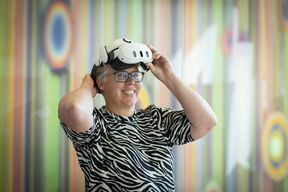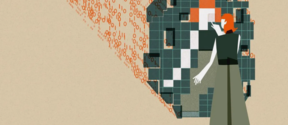Five things everyone should know about making childbirth classes virtual

Finland is currently experiencing a baby shortage, which will worsen unless more attention is paid to the birthing experience, says engineer, Licentiate of Science in Technology, e-learning expert and childbirth professional Marjaana Siivola, who will defend her doctoral dissertation at Aalto University’s Department of Computer Science this September.
Siivola has developed a new kind of childbirth education that combines online pedagogy, interactivity, and virtual reality. One of her key findings is that online education improves families’ preparedness for childbirth – but only when there is real contact with a professional. Here are five insights from her research.
1. A negative birth experience can reduce family size
Many expectant parents lack access to high-quality childbirth education, easily leading to stress and anxiety. According to Johanna Joensuu’s doctoral research, poor preparation may discourage families from having more children.
When asked about current childbirth education, 79% of Finnish midwives felt that parents are not adequately prepared, while 85% agreed that good preparation plays a key role in how birth unfolds. Above all, they hoped parents would gain a better understanding of pain and its role in childbirth, as well as the basic stages of delivery.
2. Current classes don’t meet parents’ needs
Some parents found existing courses too rigid and not aligned with their needs. Many said they did not fully understand or retain what they had learned. Instead, parents wanted flexibility, accessibility, clear information in an easy-to-use format, connection with professionals, and peer support.
Siivola is frustrated by the negative tone often surrounding online education – for example, ‘now the classes are only available online,’ usually referring to static videos and manuals distributed via the internet. Watching or reading such material rarely leads to deep learning. Yet research shows that most expectant parents already seek information online, so it makes sense to deliver childbirth education through online learning methods.
3. Online training works – when humans are included
In her dissertation, Siivola studied a model that combined a self-paced online course with regular remote meetings and a virtual-reality birthing room.
The online course was available throughout pregnancy and could be completed flexibly. Parents watched videos, read materials, completed exercises, explored delivery and operating rooms through 360° images, and used VR headsets to view childbirth training videos. In meetings with professionals, participants could ask questions, engage in discussions, and also message anonymously.
The results were promising. The course offered flexibility and accessibility, meetings enabled easy contact with professionals and peer support, and VR gave participants a realistic sense of what happens in the delivery room and how to communicate with the midwife.
4. Virtual reality brings childbirth closer
Virtual reality shows great promise in childbirth education, but its usability is crucial. If users experience motion sickness or don’t understand how to navigate the programme, they may quickly abandon it.
Even in VR, participants cannot be left alone: no childbirth training works without professional contact. Guidance, opportunities to ask questions, and real interaction remain essential.
5. Adoption is slow – but potential is huge
Despite strong research results, virtual childbirth education has not yet been widely adopted.
Siivola, however, is convinced that online education – especially VR-based applications – has a great future. The next step is to make the programme available in app stores, accessible to all.
This article was originally published on the Aalto University website on 03.09.2025
Read more news

How to ensure anonymity of AI systems?
When training artificial intelligence systems, developers need to use privacy-enhancing technologies to ensure that the subjects of the training data are not exposed, new study suggests.
Arto Hellas receives the Nokia Foundation teaching recognition award
Arto Hellas was awarded the inaugural Nokia-OKKA Educational Recognition Award for his long-term efforts in advancing ICT education.GRADSTOP: Early Stopping of Gradient Descent via Posterior Sampling presented at ECAI 2025
HIIT Postdoc Katsiaryna Haitsiukewich presented a full paper at ECAI-2025